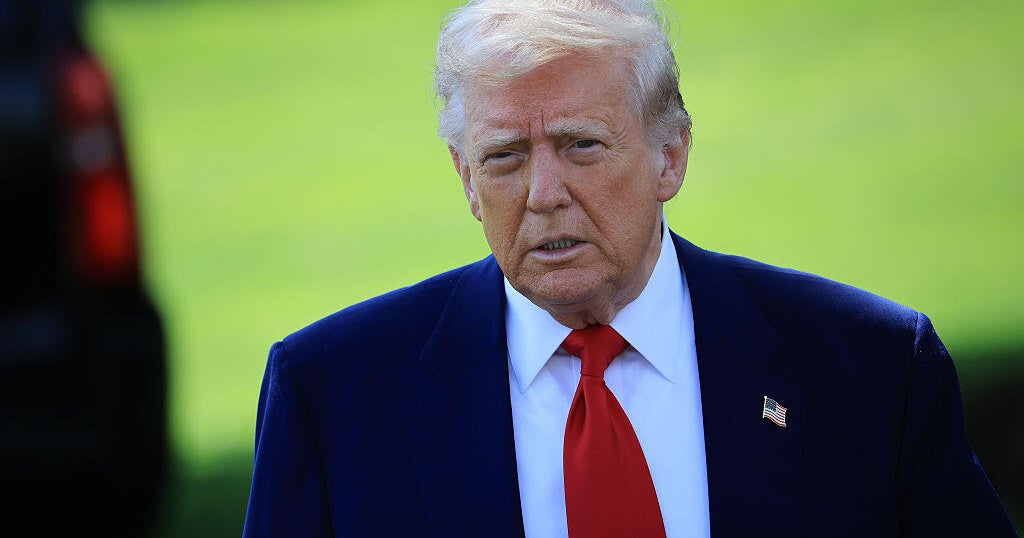In a striking blend of humor and controversy, former President Donald Trump shared an AI-generated image of himself dressed as the pope shortly after expressing his desire to take on the papal role. The image, which sparked varied reactions on social media, was released on Truth Social and further circulated through the White House’s official accounts as cardinals were preparing to select a new pope in the wake of Pope Francis’ recent passing. While Trump’s lighthearted remarks about wanting to be pope drew laughter, they ignited backlash from some critics who viewed his actions as disrespectful.
| Article Subheadings |
|---|
| 1) AI-Generated Controversy |
| 2) Remarks on Papacy |
| 3) Vatican’s Response |
| 4) Public Reactions |
| 5) Historical Context |
AI-Generated Controversy
On the first of May, Trump shared an AI-generated photo on his social media platform where he appeared in papal robes, a whimsical representation that raised eyebrows nationwide. The image depicted him seated in an ornate papal chair, adorned in traditional white vestments and a headdress, with a finger raised as if addressing his audience. The tone of the image and the fact that it was shared through official channels ignited mixed feelings among audiences. Critics decried the act as distasteful, while some supporters defended it as a humorous jab at the political climate.
Remarks on Papacy
A few days prior to the image’s release, Trump had told reporters he would “like to be pope,” a statement made lightheartedly outside the White House. The former president’s comment came shortly after the death of Pope Francis, who passed away at the age of 88 due to medical complications that included a stroke. Trump elaborated on his statement, mentioning that despite his joke, he had no actual preference for the post. “We have a cardinal from a place called New York who’s very good, so we’ll see what happens,” he noted, referring to Timothy Cardinal Dolan, the archbishop of New York. This comment, however, only further stirred speculation regarding his motivations and the implications of his joke.
Vatican’s Response
As the reactions to Trump’s image proliferated, the Vatican chose to remain neutral, with spokesman Matteo Bruni declining to comment on the AI-generated image during a briefing on the impending papal selection process. The conclave is set to begin on May 7, where 133 cardinals will convene without a clear frontrunner among them. Given the context of the image—coinciding with the solemnity of choosing a successor to Pope Francis—the Vatican’s silence suggested an attempt to maintain decorum during a sensitive period.
Public Reactions
The public’s response to Trump’s AI-generated image was polarized. Some social media users appreciated the humor, while others condemned it as an irreverent mockery of the papal figure. The New York State Catholic Conference voiced their outrage directly, stating, “There is nothing clever or funny about this image, Mr. President,” emphasizing the sensitive timing following Pope Francis’ death. According to a supporter of Trump named Debbie Macchia, while the intent seemed humorous, there should be limits regarding what is considered sacrilegious. This dichotomy of perspectives reflected the broader cultural and political divisions within the United States.
Historical Context
Historically, candidates from the United States have never been elected as pope. The recent papacies of individuals like Francis, notable for being the first pope from the Americas, have been groundbreaking. Trump’s comments on his aspirations could reflect a more extensive fascination with power and leadership within various religious contexts, highlighting how political figures often intertwine with religious institutions in modern society. This intertwining creates an atmosphere ripe for both comedic and serious discourse, emphasizing how public figures navigate the complexities of their identities and aspirations.
| No. | Key Points |
|---|---|
| 1 | Trump shared an AI-generated image of himself as the pope, sparking controversy. |
| 2 | He jokingly expressed a desire to take on the papal role following Pope Francis’s death. |
| 3 | Vatican officials have refrained from commenting on the situation. |
| 4 | Public reactions have been polarized, further emphasizing cultural divides. |
| 5 | Historically, the U.S. has never produced a pope, highlighting Trump’s unusual comments. |
Summary
The controversy surrounding Donald Trump’s AI-generated image as the pope is a microcosm of the tension between humor and irreverence in today’s political discourse. While the image and his remarks have sparked diverse reactions, they underline the complexities of how public figures engage with institutions of religion and the multifaceted societal responses that ensue. The coalescing of politics and religious imagery continues to evoke discussions about respect, tradition, and the evolving nature of leadership in modern America.
Frequently Asked Questions
Question: Why did Trump share the AI-generated image?
Trump shared the image humorously, shortly after expressing his desire to be pope, following the death of Pope Francis.
Question: What was the Vatican’s reaction to the incident?
Vatican officials remained neutral, declining to comment during a press briefing related to the election of a new pope.
Question: How has the public reacted?
Reactions have been mixed, with some seeing the image as a joke while others critic criticized it as disrespectful.
